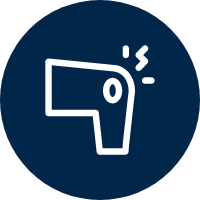Being a part of the Seattle Rehab Specialists Seattle family, as a client, has been a very valuable experience for me. I went to Kelly at Seattle Rehab Specialists in search of a safe spot to handle some shoulder and back pains stemming from years of architectural office work. Kelly is an excellent, and competent physical therapist; but his approach to therapy, body conditioning and rehabilitation is so enthusiastic, and personable, that it is hard not to call him a friend as well. When I meet with him, he is always ready with explanations and/or illustrations and photos in hand, to make sure that I am comfortable with what is happening in each session. It is important for him that I understand the root causes of my pain(s), and how the various therapeutic routines will help me to heal my body. Kelly answers all of my questions with patience, genuine concern and a little humor
Rehab for Work Related Injuries in Seattle, WA

Recovering from Work-Related Injuries in Seattle, WA
Work injuries vary from person to person but mostly have to do with repetitive motions or on-the-job hazards. When you suffer from a work injury, it requires a break in doing your job. Or even worse, suffering through pain as you continue to make a living.
Our specialists have the expertise to treat your work injuries so you can return safely to work. As in-network physical therapists with Washington Labor & Industry, we are committed to supporting injured workers through every step of the recovery process.
Common Work-Related Injuries
We treat a variety of work-related injuries, ranging from acute incidents to chronic conditions. Here are the most common types of injuries we see:
Overexertion Injuries
These occur when workers lift, push, pull, or carry heavy objects improperly, leading to muscle strains and joint injuries. Repetitive motions like bending, twisting, or lifting without adequate breaks and improper mechanics can cause continuous strain on specific muscle groups, commonly affecting workers in physically demanding roles.
Slips, Trips, and Falls
Wet, uneven, or cluttered surfaces are common hazards that can lead to falls, resulting in sprains, fractures, and muscle strains. Falls from heights, such as from ladders or scaffolding, often cause more severe injuries, including fractures or head injuries.
Repetitive Strain Injuries (RSIs)
Conditions such as carpal tunnel syndrome, tendinitis, and bursitis arise from repetitive tasks, poor posture, and overuse of specific muscle groups. These injuries are prevalent among office workers, factory employees, and those using vibrating tools.
Musculoskeletal Disorders (MSDs)
MSDs include injuries to muscles, nerves, tendons, joints, and cartilage, often resulting from poor ergonomics, repetitive motions, and heavy lifting. These disorders can cause significant pain and impair function, necessitating targeted rehabilitation.
Prolonged Static Postures
Sitting or standing in one position for extended periods can lead to back pain, neck pain, and circulatory issues. These conditions are common in office workers and jobs requiring prolonged standing, highlighting the importance of proper posture and movement breaks.
Treatment Options for Work Injuries
Our rehab center offers a range of treatment modalities designed to facilitate recovery and restore function:
Hands-On Manual Therapy
Techniques such as soft tissue mobilization and instrument-assisted soft tissue mobilization help reduce pain and improve mobility.
Dry Needling
This technique targets muscle tension and trigger points to alleviate pain and enhance healing.
Kinesio Taping
Kinesio tape provides support and stability to muscles and joints without restricting movement, aiding in pain reduction and recovery.
EMG Biofeedback Training
EMG biofeedback helps patients learn to control muscle activity, which is crucial for the rehabilitation of specific muscle groups.
Blood Flow Restriction Training
BFR enhances muscle strength and recovery by using controlled pressure to restrict blood flow during exercise.
Therapeutic Exercise Interventions
Customized exercises improve strength and reduce weakness or muscle atrophy, particularly in affected limbs.
Flexibility Exercises
Target joint and tissue limitations to enhance mobility and reduce stiffness.
Each treatment plan is tailored to the patient’s presentation and specific injury, ensuring the most effective approach for recovery.

Supporting Safe Return to Work
Our goal is to help individuals return to work safely and confidently without the fear of re-injury. To achieve this, we incorporate work-simulated activities into the rehab program, ensuring that patients can handle the tasks and challenges their jobs require. By the end of their physical therapy program, patients are equipped with the skills and strength needed to perform their duties without hesitation.











